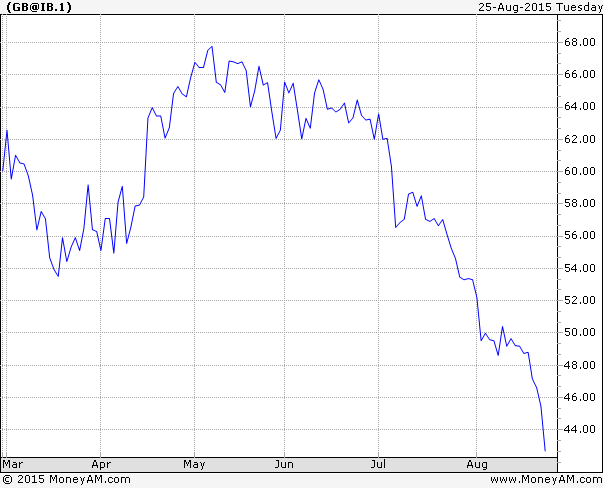
Commodities have had a rough couple of months, and the rout shows no sign of abating. Crude Oil is currently at $39 a barrel, with Brent Crude at $43; compare these prices to those of a year ago, when oil was over $100 a barrel, and it’s clear there has been significant volatility in the sector. But the question on everyone’s lips is: how low can it go?
Oversupply and weakening demand has caused the dramatic drop in oil price over the last year. Whilst demand was high, oil companies began to produce more; the US in particular has been pumping more and more oil, as has Saudi Arabia. Furthermore, the nuclear deal with Iran means sanctions have lifted and millions of barrels of Iranian oil will enter the market for the first time in twenty years, exacerbating the problem further.
This problem is coupled with an unprecedented drop in demand. Many expected China’s hunger for oil to soak up the excess oil produced; however, with the ‘Great Fall of China’ casting aspersions upon the health of the world’s second biggest economy, demand from the region has dried up significantly.
High production and low demand has led to fierce competition in the industry and the U.S. rigcount has dropped to a 12-year low. Coupled with deep lay-offs and cutbacks in the sector, domestic production should drop significantly in the near future, perhaps evening up supply and demand.

So what lies ahead for oil?
According to the August OPEC report, global oil demand is expected to pick up in 2015 by 1.38/mb.d. Demand is showin signs of recovering in some countries, but until production shows signs of significant decline, crude oil prices will remain low.
According to Gulf News, recovery may take a while; especially with the impact of Chinese markets causing prices to drop to a six year low on Monday.
Ole Sloth Hansen, Head of Commodity Strategy, Saxo Bank, told Gulf News:
“Fears about weaker global growth, especially in China, have hit the market at a time where supplies of key commodities from oil and copper to iron ore and corn have been rising. Mining and oil companies have all been expecting a continued strong rise in demand from emerging economies.”
The effect of this crisis on countries whose economies rely on oil production is huge, and some blame OPEC, the intergovernmental oil organization, for not intervening to stabilize the markets. The organisation met in 2014 but decided not to implement measures to control production; the price of oil has since fallen nearly 50 percent.
Russia is one such country facing difficulties; wealth from oil gives Putin’s government strength, and as shown by their recent economic downturn, the country heavily relies on oil exports to keep it afloat. Similarly, oil money funds the extravagant lives of countless Saudi princes and the urbanisation of their countries. Slower demand and weak oil prices also risk impacting upon smaller producing nations such as Venezuela and Nigeria, where oil exports account for 35 percent of GDP.
The history of oil is littered with booms and busts and so in the bigger picture, this rout is nothing new. Furthermore, oil is not alone – the drop has been commodity wide, with diamond giant De Beers recently announcing a 9 percent cut in retail prices as demand for diamond slows. Much of the global economy has been affected by political and economical problems of late – including the situations in both Greece and China – and the fall in commodities is just one reaction. History shows that the price of oil will, without a doubt, recover – but by all accounts, it’s unlikely to be before the middle of next year.
Miranda Wadham on 26/08/2015
